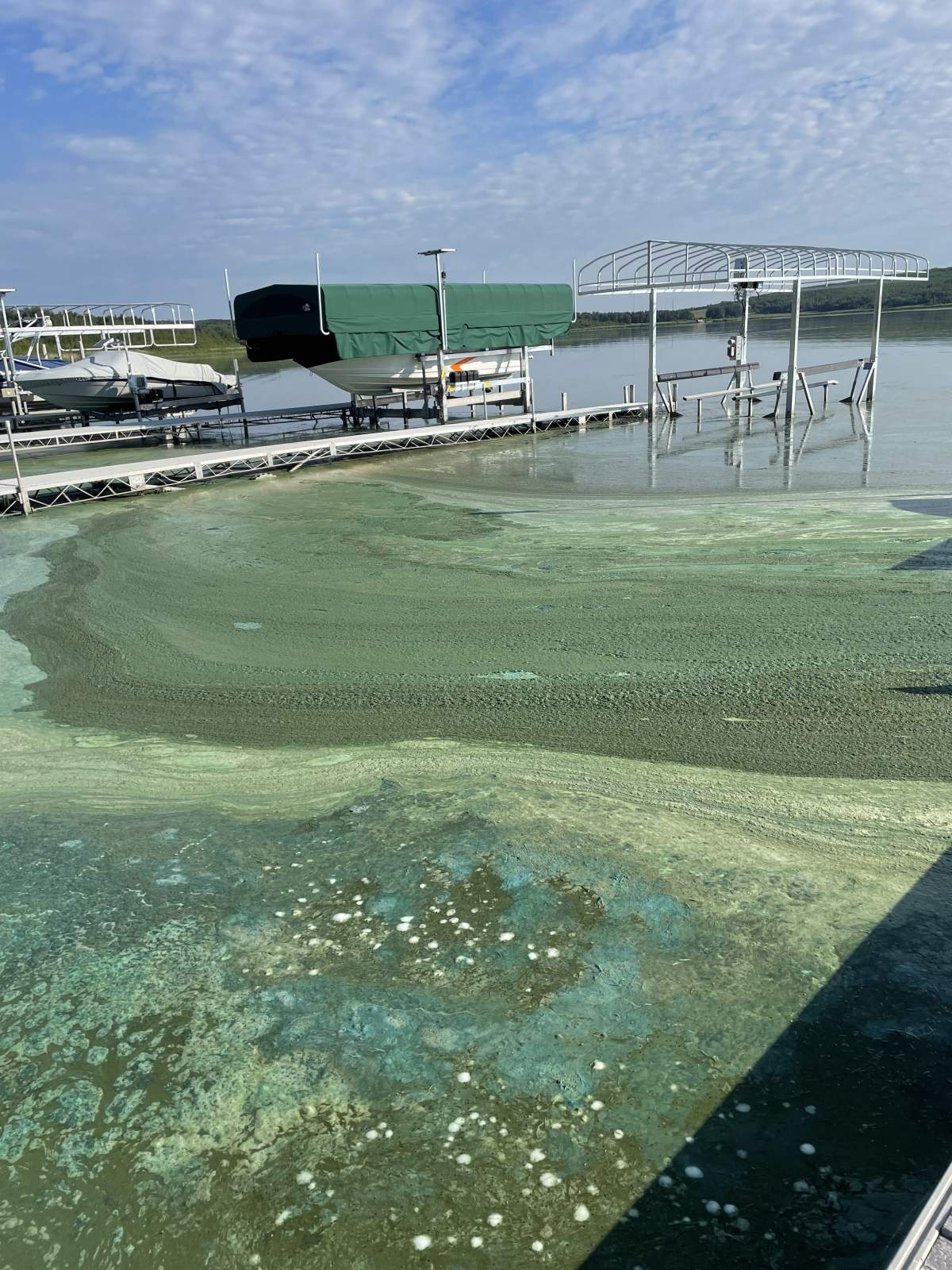Alberta Health Services (AHS) has issued blue-green algae advisories for 13 lakes across the province.

Jay White, an Alberta biologist, said advisories come when algae floats to the surface and looks like a paint-coloured stain on the water.
“It could be blue, it could be green, but you’ll know when you’re in it. It’s a long filament, it sticks to you and when it starts to break down it’s really stinky,” said White.
LISTEN: Alberta biologist Jay White explains blue-green algae on ‘This Morning’ with J’lyn Nye and Daryl McIntyre
Blue-green algae, also known as cyanobacteria, becomes visible when weather conditions are calm and can look like scum, grass clippings, fuzz or globs on the surface of water. It can be blue-green, greenish-brown, brown or pinkish-red and often smells musty or grassy, AHS explained in the advisory.
AHS said those who are planning to visit lakes with a blue-green algae advisory should not swim or wade, or allow their pets to swim or wade, in any areas where the algae is visible.

Get daily National news
People should avoid all contact with the algae and if contact occurs, wash with tap water immediately, said AHS.
AHS said people or animals who come in contact with the algae can experience a rash, skin irritation, a sore throat, swollen lips and sore red eyes. They can also be subject to fever, nausea, vomiting and diarrhea, the agency said.
“Symptoms usually appear within one to three hours and resolve in one to two days,” AHS said.
“Symptoms in children are often more pronounced; however, all humans are at risk of these symptoms,” AHS said, adding if animals start experiencing these symptoms, owners should contact a veterinarian immediately.
White said there are dozens of cases in the province each year of pets dying after ingesting blue-green algae that gets stuck to their fur and said owners should hose their pets down immediately if they come in contact with the algae.
The lakes under a blue-green algae advisory as of Friday morning are:
- Astotin Lake, located in Elk Island National Park
- Little Fish Lake, 40 kilometres east of Drumheller
- Severn Dam Reservoir, 65 kilometres east of Calgary
- Lac La Biche Lake in northern Alberta
- Isle Lake, 80 kilometres west of Edmonton
- waters in Enchant Municipal Park
- Lower Therien Lake, located south of St. Paul
- Gregoire Lake, 25 kilometres south of Fort McMurray
- Lessard Lake, 70 kilometres northwest of Edmonton
- Steele Lake, 110 kilometres north of Edmonton
- Twin Valley Reservoir, 75 kilometres south of Calgary
- Skeleton Lake, 110 kilometres northeast of Edmonton
- Moose Lake, 175 kilometres northeast of Edmonton
Where does blue-green algae come from?
White said there has been a perfect storm of conditions that have caused blue-green algae on numerous lakes across Alberta.
“We had the Holy Trinity: we had low snowpack this spring, we had a lack of spring runoff and we had a rapid warming of lakes this spring because of hot, dry conditions,” he said.
“Now add no wind to all of that and it’s the perfect recipe for these guys to proliferate.”

The blooms are common in Alberta because of the phosphorus-rich soils the region sits on, White added.
“We’re on a nice, thick phosphorus-rich glacial till the glaciers dragged here from Ontario and Quebec about 12,000 years ago … which is why we have the great agricultural conditions that we do, but our lakes unfortunately tend to suffer,” said White.
When there’s an imbalance of nutrients in the water, like phosphorus, the nutrient dominates the lake and no other organisms can eat or use it up, he said.
“They just do what bacteria does — proliferate very quickly,” said White.









Comments